Sensors & Cyborgs: My Experience With the Freestyle Libre 2
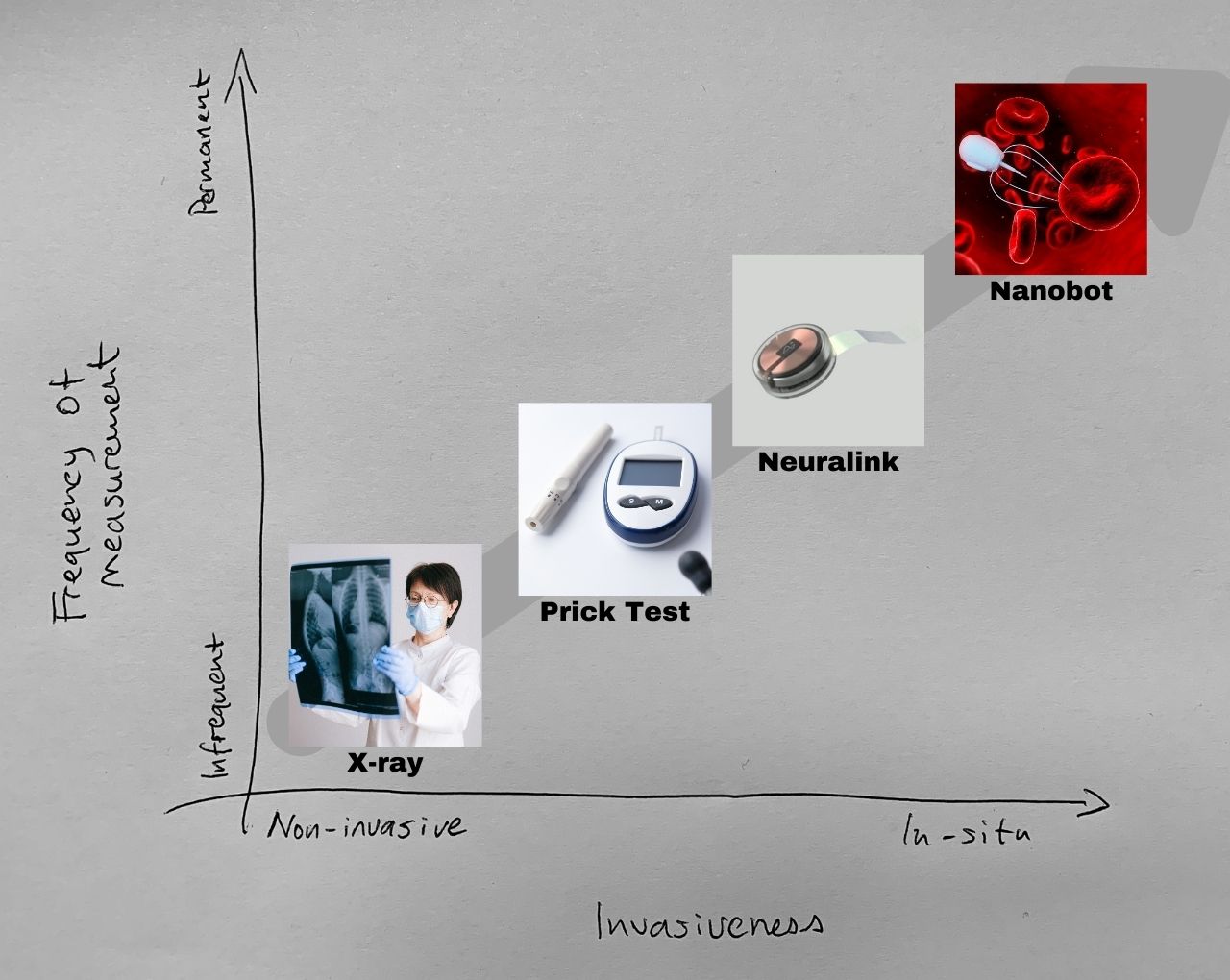
The path of evolution of sensors is very clear. Like all technology, sensors will get ever closer to us, until they are us.
The first sensor I ever used was a fever thermometer. Back in the days, way before infrared was used to measure body temperature, I remember how my grandmother cared for me. She measured my temperature using a mercury thermometer. We needed to be extra careful when handling it. I remember always being a bit afraid of dropping it. Since 2009, mercury thermometers have been banned in the EU and in over 20 states in the US.
She was the first doctor on our street in Moscow. And that’s why we were the first household that got a telephone. My grandmother needed to be reachable in case of emergencies.
Since then, diagnostic sensors have transformed. This transformation happened in two dimensions. First of all, sensors have gotten more invasive. While an X-ray machine is clearly far removed from your body, a prick test that millions of people with type 2 diabetes perform several times per day is invasive. The digestible Proteus Digital Health pill performs measurements from inside your body. And more internal sensors like that are coming.
Sensors have also evolved across a second dimension: They have allowed for more and more continuous measurements. Coming back to the humble thermometer, we used it only a couple of times per year, when already sick. Now, the prick test is used several times per day. My Apple Watch tracks my heart rate in small increments whenever I wear it. And Elon Musk’s Neuralink continuously measures neural activity.
We are clearly heading into a world of always-on integrated bio-surveillance.
Continuous Blood Glucose Monitoring
The easiest way to invent the future is to live in it.
So far, I’ve only used sensors that were outside of my body. But for some time, I have been curious how an invasive sensor would feel. Invasive sensors turn you into a cyborg. Let’s be honest, that’s pretty cool!
Since I’m quite interested in metabolism and have been practicing a 16:8 time-restricted diet for several years, a continuous blood glucose monitor (CGM) was top of my list.
When first looking into getting one in 2018, however, Abbott’s FreeStyle Libre sensor required a separate device to read it. That turned me off.
However, sometime in 2019, the second version of the sensor finally synced with the FreeStyle Libre Link App. One month ago, I’ve ordered my CGM sensor.
Ordering the FreeStyle Libre 2
The first surprise was the process of buying the device. The sensor is an invasive medical device. This is why I expected to be able to purchase it at my local pharmacy. However, Abbott doesn’t sell it offline. Instead, they are following a direct-to-consumer approach, selling it exclusively on their own website. I think it’s the first time I’ve seen a medical device that is sold exclusively online.
Their website works fairly well. It won’t blow your socks off, but it offers a clear enough funnel. After a short registration, I was positively surprised that they support all the usual payment methods - credit card, PayPal, wire transfer, and even purchase on account.
The FreeStyle Libre 2 sensor is €58,39 incl. VAT plus €5,80 shipping cost. Paying 10% in shipping costs feels like a lot. Especially after considering that it took Abbott over 10 days to ship it. To be fair, though, they warned me before placing my order that due to COVID-19 they were experiencing delays.
I don’t see that warning on their website now. So, it seems that these problems have been solved in the meantime.
Unboxing
First of all, the packaging and setup experience is really well done. Considering that I had no pre-existing exposure to blood glucose measurement and as a healthy individual I’m not their main target customer, the whole setup process was fast, easy, pain-free, and I felt in control throughout.
The FreestyleLibre 2 package with the brochure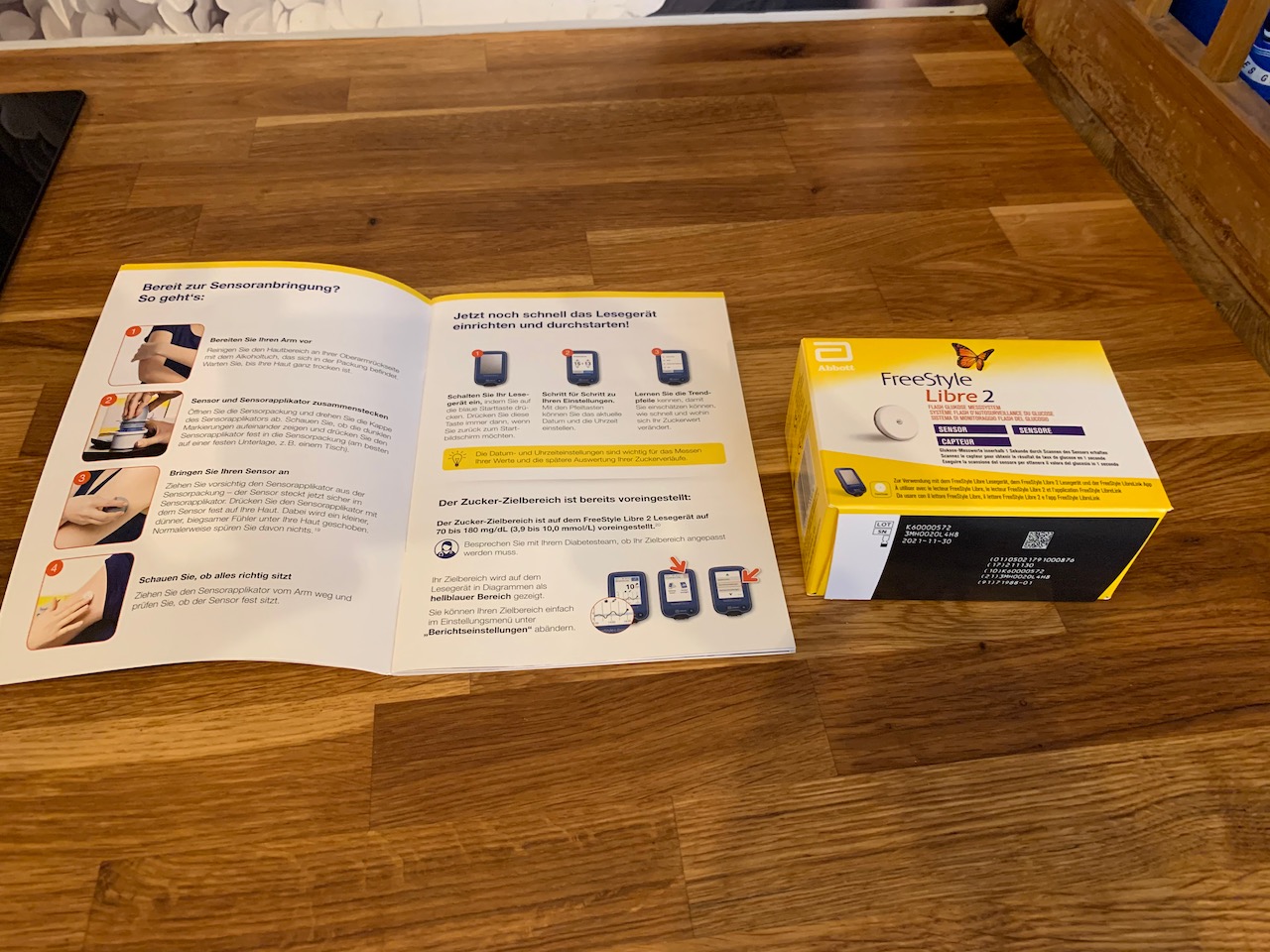
The sensor application device and the sensor fresh out of the box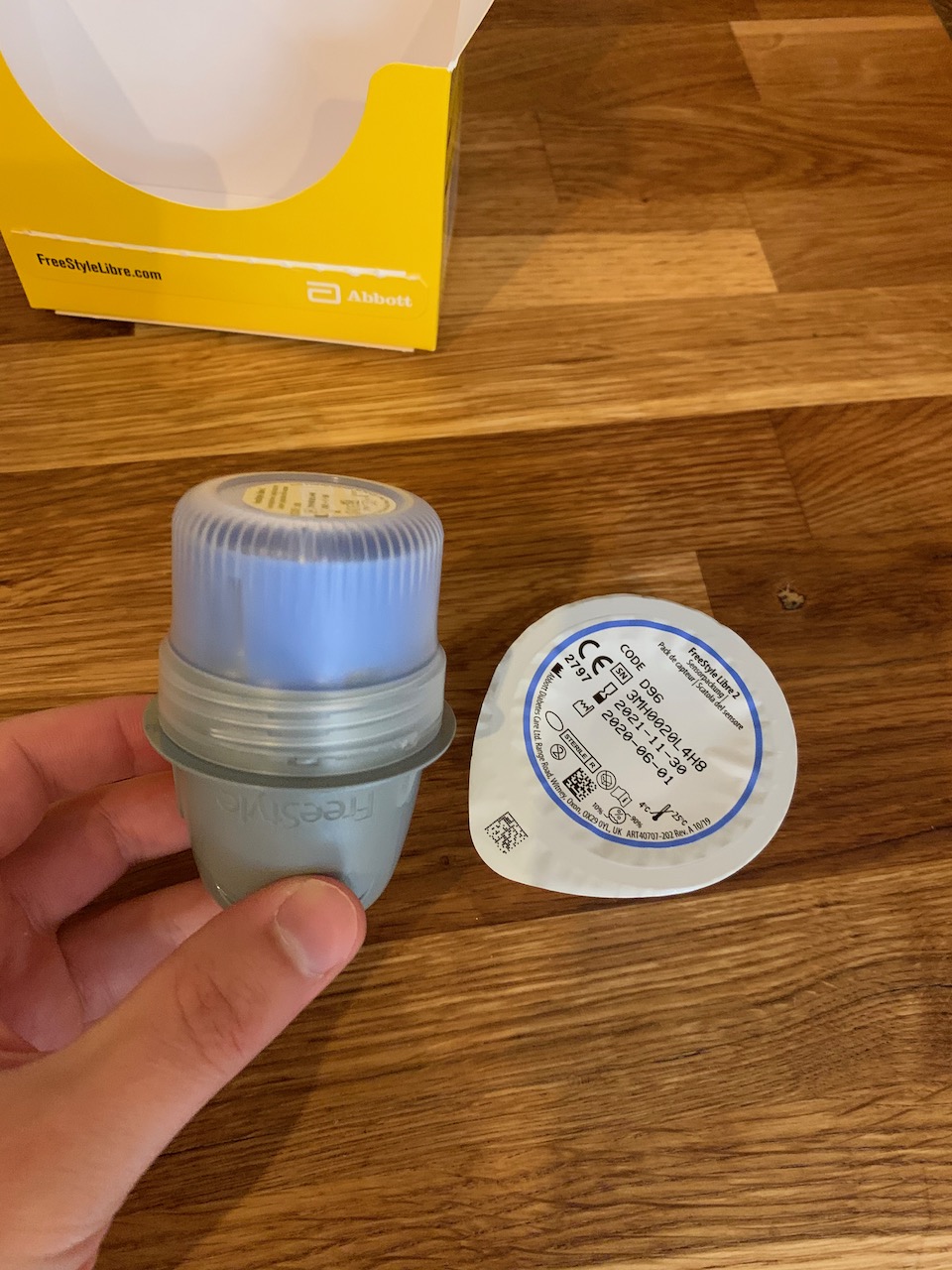
I’m not afraid of needles, but I have a lot of respect for nurses who know how to administer them. So, before buying the device, I searched on YouTube to find out how much it hurts. All the videos said that one doesn’t feel a thing. We’ll get to that point later.
When unpacking the sensor, I was very surprised to find no needle! In fact, the needle is so well hidden that I only saw it after removing the sensor. That’s a very reassuring design choice.
Like all healthcare products, the FreeStyle Libre comes with a lot of plastic. If I didn’t know better, the amount of plastic waste that comes with the small sensor would be a turn-off. However, I know that this is a big problem for healthcare overall and it’s required to maintain certain hygienic (one-time-use) and secure features (component safety).
After retrieving all components from the box and reading through the guide, I was ready to put it on.
Self-Administration
The administration is fairly easy:
- Use the alcoholic wipes to disinfect the area of the skin on the back of your arm where you would like to administer the sensor.
- Align the sensor with the application device and load it.
- Launch the sensor to your arm.
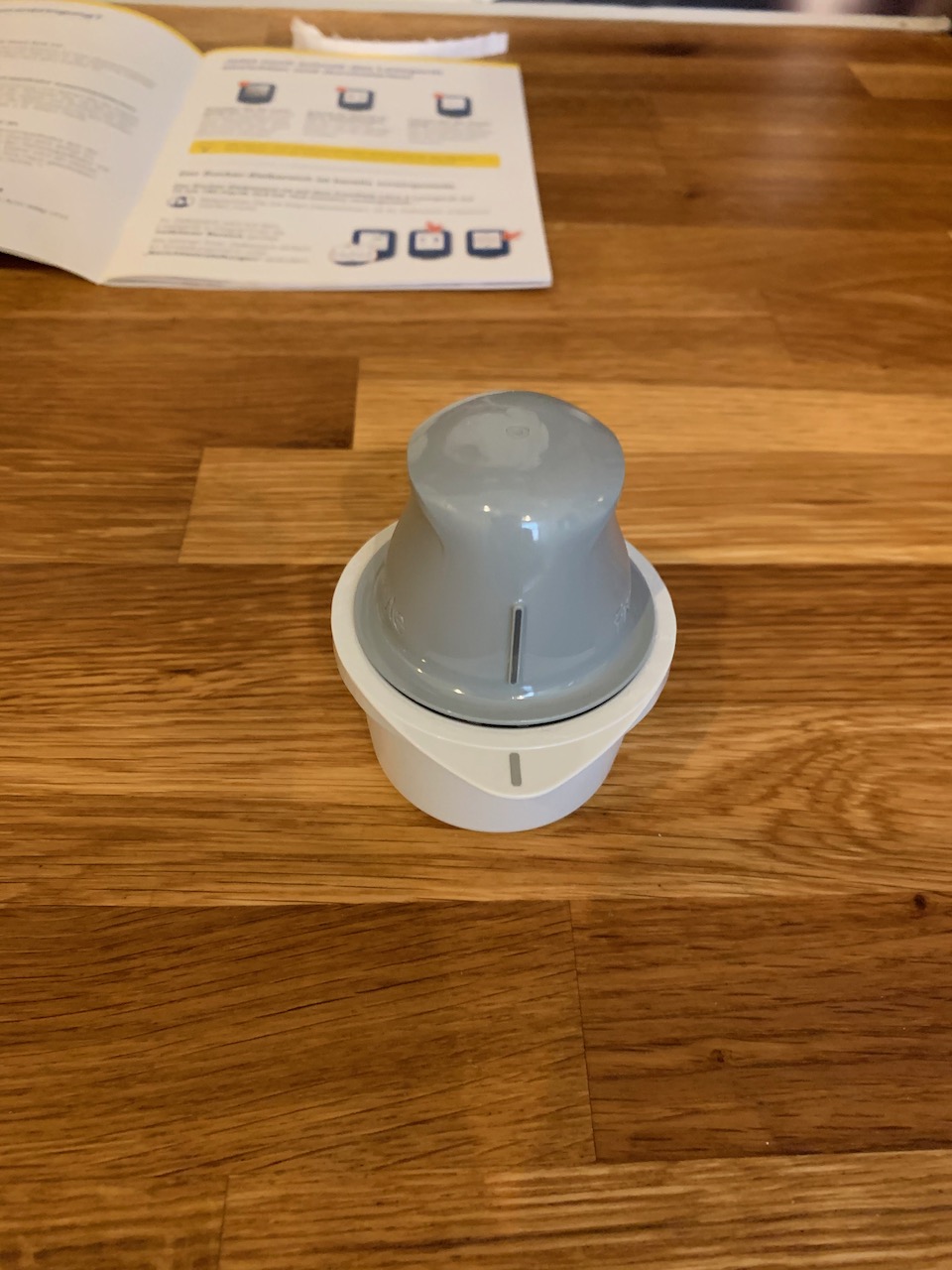
Here’s a video summary of the whole application process:
That’s it. It took me two minutes to complete. It worked really well. And I didn’t feel a thing. It was actually so smooth and sensation-free that I had to check in the mirror to validate that the sensor was really there. It was. I had become a cyborg!
After it is attached to the skin, you need to fire up the LibreLink App and perform your first readout. However, instead of getting started right away, there’s a one hour wait time. I still don’t know why this is the case. Maybe the sensor is running Windows XP and needs to boot. I don’t know…
After drinking tea and staring at the sensor for an hour, I was ready to go and start measuring.
User Experience
Taking measurements is really easy with the phone. It’s literally pushing one button in the app and then holding the phone over the sensor. Viola! You’ve got your blood glucose reading.
After some time, the app shows you glucose levels averaged over a 3-hour interval over 7, 14, 30, or 90 days, as well as graphs, either on a day-to-day basis or averaged. With each measurement you can also add notes on things like exercise or diet.
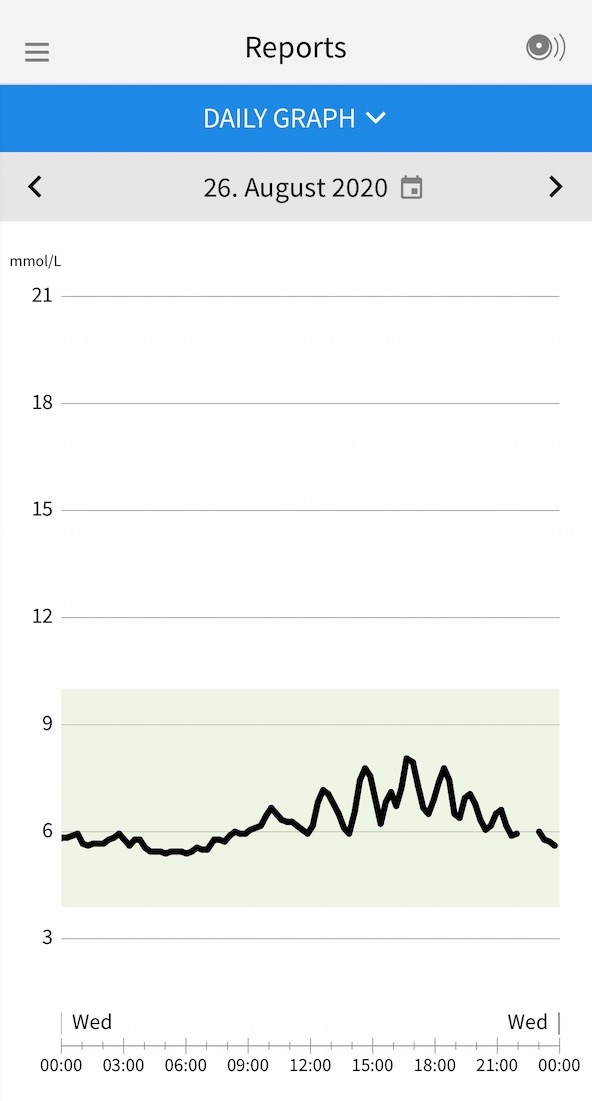
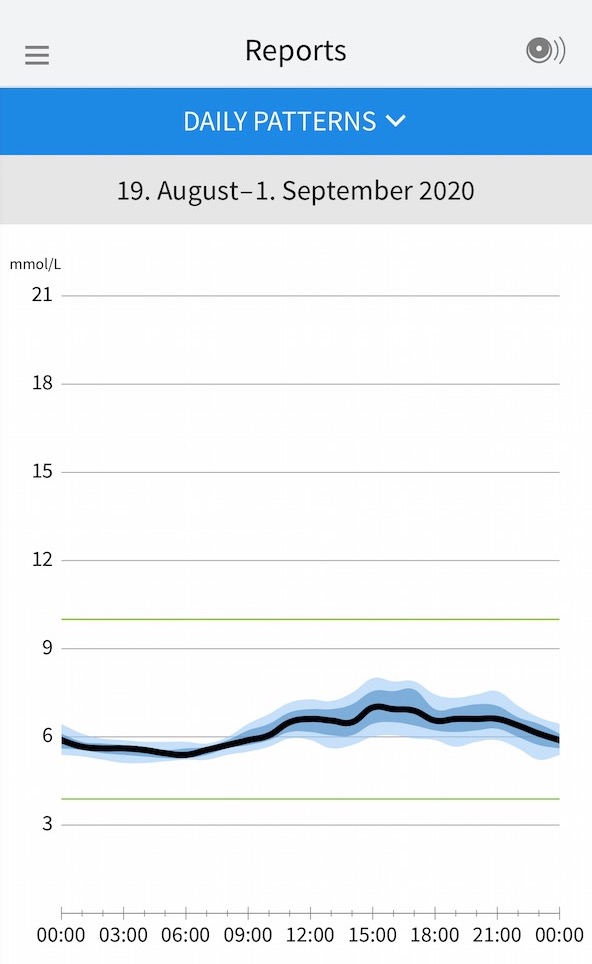
Coming back to the sensor being pain-free. After a couple of days, I had at moments where I completely forgot that I was wearing the sensor. I remember a moment where I tried to take off a t-shirt and it got stuck on my arm. After trying to pull it off with force and then feeling the spot, I remembered that there was the sensor. The fact that the sensor became an unconscious part of me demonstrated that the technology is really well done.
I’ve used the sensor playing sports, swimming, and surfing. It lasted almost the whole 14 days. On day 13, the t-shirt situation occurred again. And this time, I’d torn down the sensor by accident.
Removed sensor with needle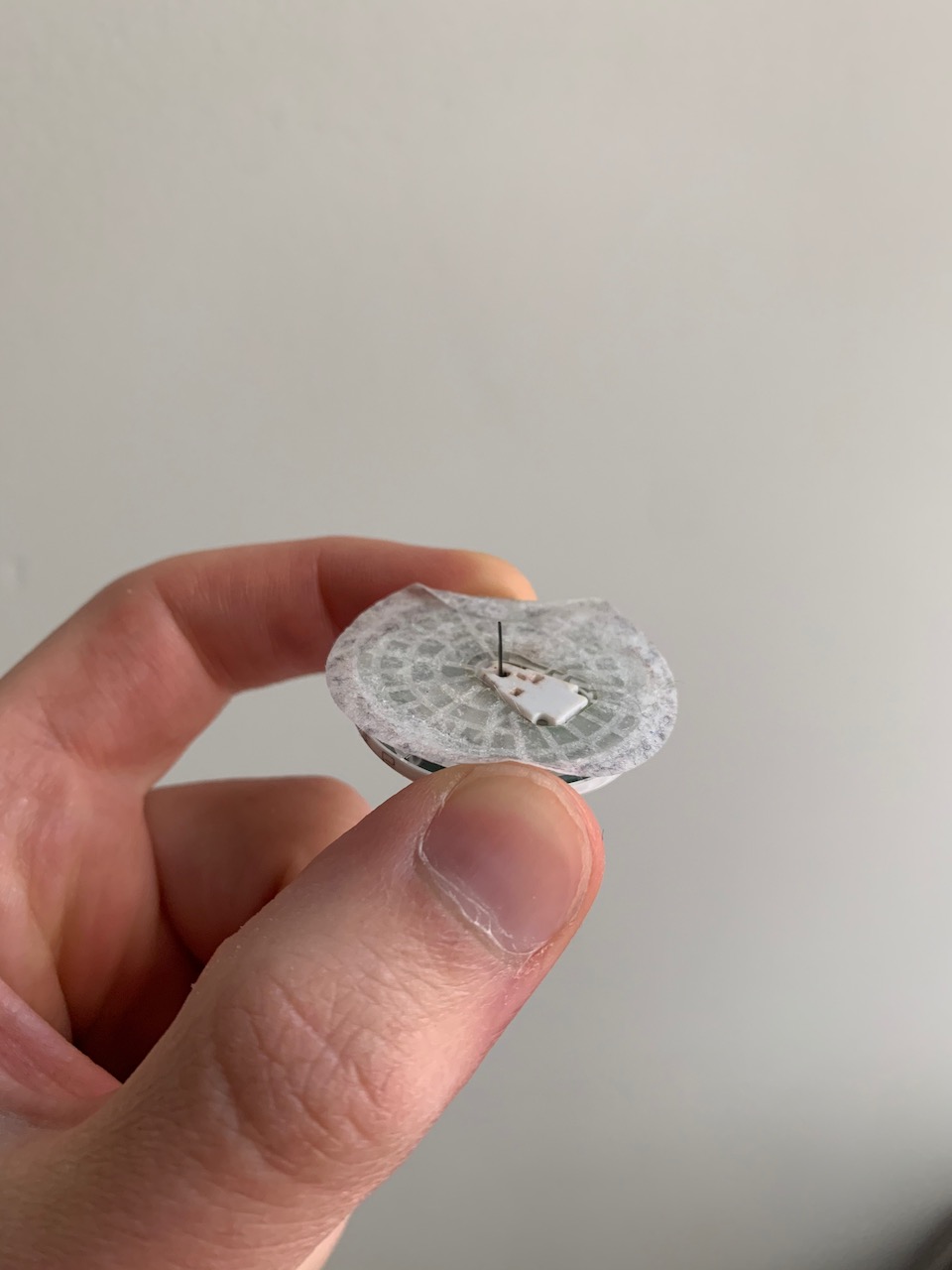
What I discovered since is that third-party companies have developed upgrades that work on top of the sensor. One example is the strangely named MiaoMiao2 Smart Reader. It gets attached on top of the FreeStyle Libre sensor and sends data every 5 minutes to your smartphone. There’s also the BluCon system. With these upgrades, you don’t even need to hold your phone over the sensor. A real solution to a first-world problem!
Takeaways
So, what did I discover over those two weeks?
Actually, not that much. For starters, I indeed do not have diabetes. That’s good.
Other than that:
- As expected, I’m more glucose-sensitive later in the day. The circadian rhythm is real.
- I was surprised by the enormous spike that I got from drinking half a glass of unsweetened oat milk. From now on I will be more careful with that stuff.
- I’ve also noticed that if I’m feeling tired in the afternoon, it’s because my blood glucose rose above 8,2 mmol/L after lunch.
- The 16:8 diet works for me. On days when I adhere to it, I have lower overall blood glucose and also lower volatility.
My takeaway is that the FreeStyle Libre works really well, but it’s clearly not made for healthy people. And as a healthy person, I think that’s a massively missed opportunity.
What I would need would be a sync with my iOS Health app, which the Link app doesn’t support as of now. I would also need more than just the raw data. What would be helpful is a glucose sensitivity index. I’d want the ability to cross-correlate it with e.g. time of day, sleep time/quality, diet, and exercise.
I’d like to see how this index changes over days and months, comparable to the data I get on resting heart rate and heart rate variability.
This kind of metabolism monitoring via a CGM sensor is now being transformed into a consumer experience, though. The data stream is used for personalized recommendations concerning diet and exercise. The startup that seems to have taken the lead here is Levels.
Services like Levels form a small piece of the puzzle in the preventative health landscape. With more continuous integrated bio-surveillance, we will at one point not too far in the future be able to stay healthy for significantly longer. I can’t wait.